First Computer A430 Notebook PC User Manual Chap6
First International Computer Inc Notebook PC Chap6
Contents
Chap 6
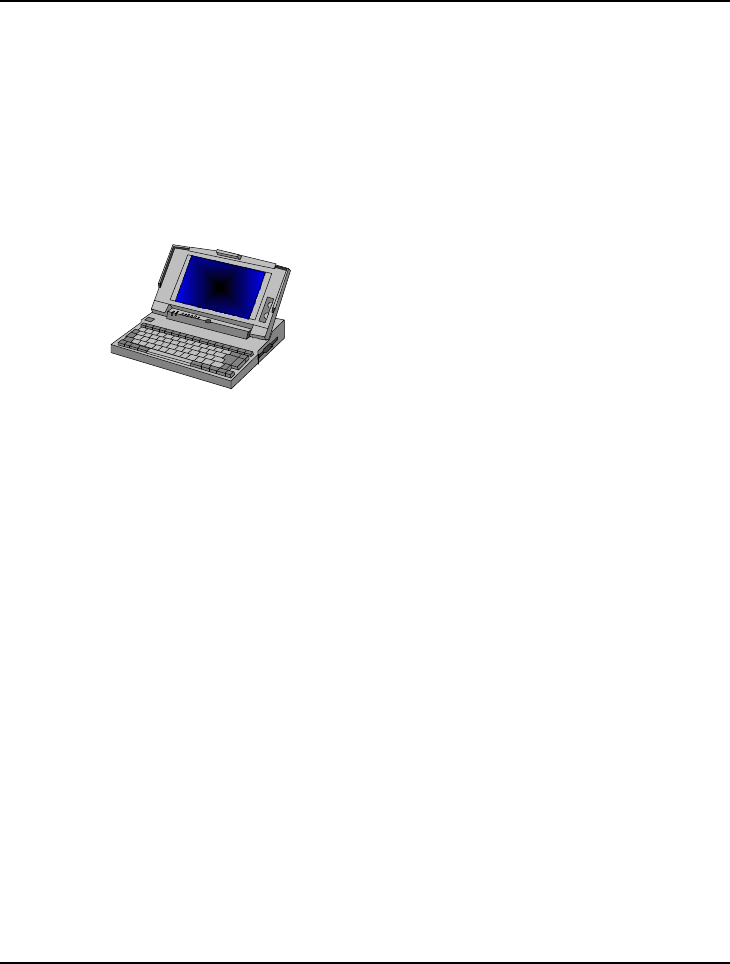
Customizing Your Notebook 6
6-1
6Customizing Your Notebook
Your computer uses the Phoenix BIOS Setup
program that allows you to set several system
configuration in changing the way your computer
performs. This includes your system time and date,
disk drive configuration, password setup, and power
management settings. These information are then
stored in the CMOS RAM and will remain
permanent unless you change it again. This chapter
discusses on how you will activate the BIOS Setup
program and change the system configuration to suit
your desired operation. You must be careful to set
the configuration properly in order for your
computer to run smoothly. If you are not sure of any
settings, contact your dealer.

Notebook User Guide
6-2
6.1 Running the BIOS Setup Program
Your computer is likely to have been properly setup and configured by your
dealer prior to delivery. However, you may find it necessary to use the
computer’s BIOS (Basic Input-Output System) Setup program to change
system configuration information, such as the current date and time, or your
hard disk drive type. The Setup program can be accessed when you power on
the system and pressing the <F2> function key.
The settings that you specify within the Setup program are recorded in a
special area memory called the CMOS RAM. This memory is backed up by a
battery so that is will not be erased when you turn off or reset the system.
Whenever you turn on the computer, the system will read the settings stored
in the CMOS RAM and compare them to the equipment check conducted
during the Power On Self Test (POST). If an error occurs, an error message
will be displayed on the screen, and you will then be prompted to run the
Setup Program.
As the POST (Power-On Self Test) executes during the boot up process, the
screen will display the following message:
Press <F2> to Enter SETUP
Press the <F2> key to run the BIOS Setup program. The BIOS Setup
program is organized into six menus which you can select using the ß and à
keys. To move from one option to another, you use the up and down arrow
keys while using the <+> and <-> keys to change the settings. On the right
hand side of the screen are some brief help descriptions of each item you
want to change.
On the BIOS Setup program, you will find the following parts on the screen:

Customizing Your Notebook 6
6-3
• Item Specific Help
The right side of the screen. This area describes each parameter and its
available settings.
• Menu Bar
The top line of the screen. Each of the six selections displays its own
screen.
• Parameters
The left side of the screen. This area lists the parameters and their current
settings.
• Key Status Bar
The bottom part of the screen. These lines display the keys available to
move the cursor, select a particular function and so forth.
To exit the BIOS Setup program, simply press the <Esc> key and select from
the Exit menu whether you want to Save changes and exit; Discard Changes
and exit; or Set default values.
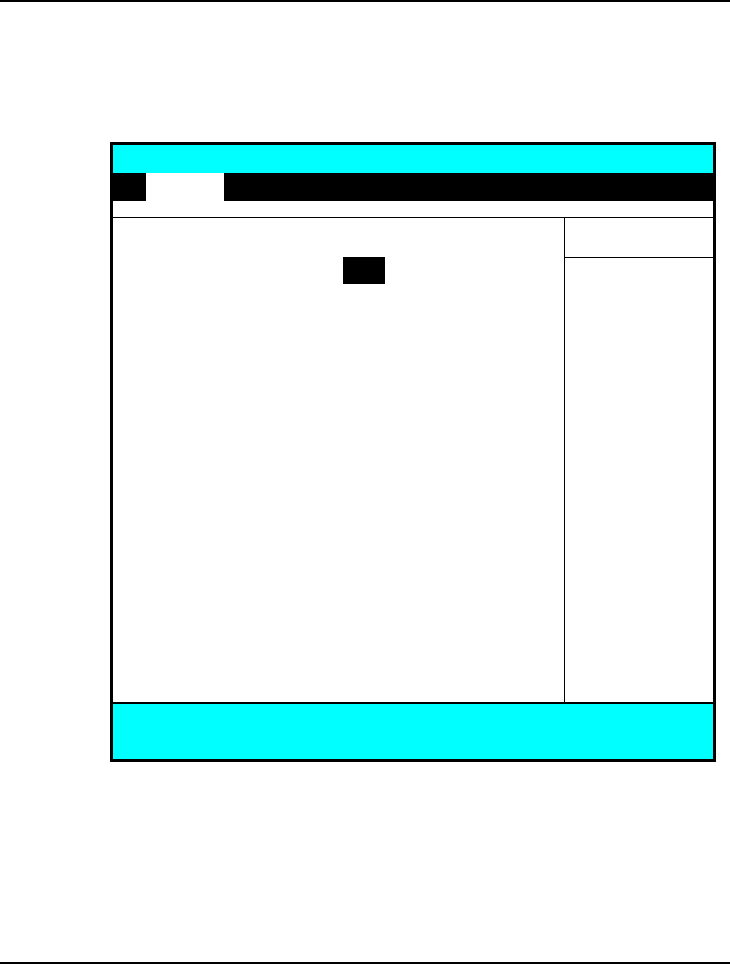
Notebook User Guide
6-4
6.2 Using the Main Menu Setup
PhoenixBIOS Setup Utility
Main Advanced Security Power Boot Exit
Item Specific Help
System Time:
[12
:00 :00]
<Tab>, <Shift-Tab>,
System Date: [07/01/1999] or <Enter> selects
Language: [English (US)] field.
Diskette A: [1.44/1.25 MB, 3½”]
4Internal HDD [12073MB]
Internal CD-ROM Installed
Boot Display Device: [Both]
System Memory: 640 KB
Extended Memory: 130048 KB
CPU Type: Pentium (R) III
CPU Speed: 500 MHz
BIOS Version: B.1A-0215-6211
F1 Help
á
â
Select Item
−
/
+
Change Values F9 Setup Defaults
Esc Exit
ßà
Select Menu Enter Select
4
Sub-Menu F10 Save and Exit

Customizing Your Notebook 6
6-5
• System Time
Allows you to change the system time using the hour:minute:second
format of the computer.
Enter the current time for reach field and use the <Tab>,
<Shift>+<Tab>, or <Enter> key to move from one field or back to
another.
You can also change the system time from your operating system.
• System Date
Allows you to set the system date using the month/date/year format.
Your notebook is year 2000-compliant.
Enter the current time for reach field and use the <Tab>,
<Shift>+<Tab>, or <Enter> key to move from one field or back to
another.
You can also change the system time from your operating system.
• Language
Allows you to set the display language in English or Japanese version for
the BIOS Setup program.
• Diskette A
This item enables or disables the floppy disk drive by pressing the
<Enter> key. When you select 1.44MB/1.25MB 3 ½”, you should know
that the 1.25MB 3 ½” diskette requires a 3-mode floppy-disk drive and
refers to a 1024byte/sector Japanese media format.
• Internal HDD
This field displays various parameters for the hard disk drive. If type
[Auto] is selected, the system automatically sets these parameters. If type
[User] is selected, Cylinders, Heads and Sectors can be edited.
• Internal CD-ROM
This field is for information only as the BIOS automatically detects the
CD-ROM.

Notebook User Guide
6-6
• Boot Display Device
Lets you select the display device.
• System Memory
This field reports the amount of base (or conventional) memory found by
the BIOS during Power-On Self-Test (POST).
• Extended Memory
This field reports the amount of extended memory found by the BIOS
during Power-On Self-Test (POST).
• CPU Type
This field reports the CPU type information detected by the BIOS during
Power-On Self-Test (POST).
• CPU Speed
This field reports the CPU speed information detected by the BIOS
during Power-On Self-Test (POST).
• BIOS Version
This field are for information only as the BIOS display the BIOS version
during the Power-On Self-Test (POST).
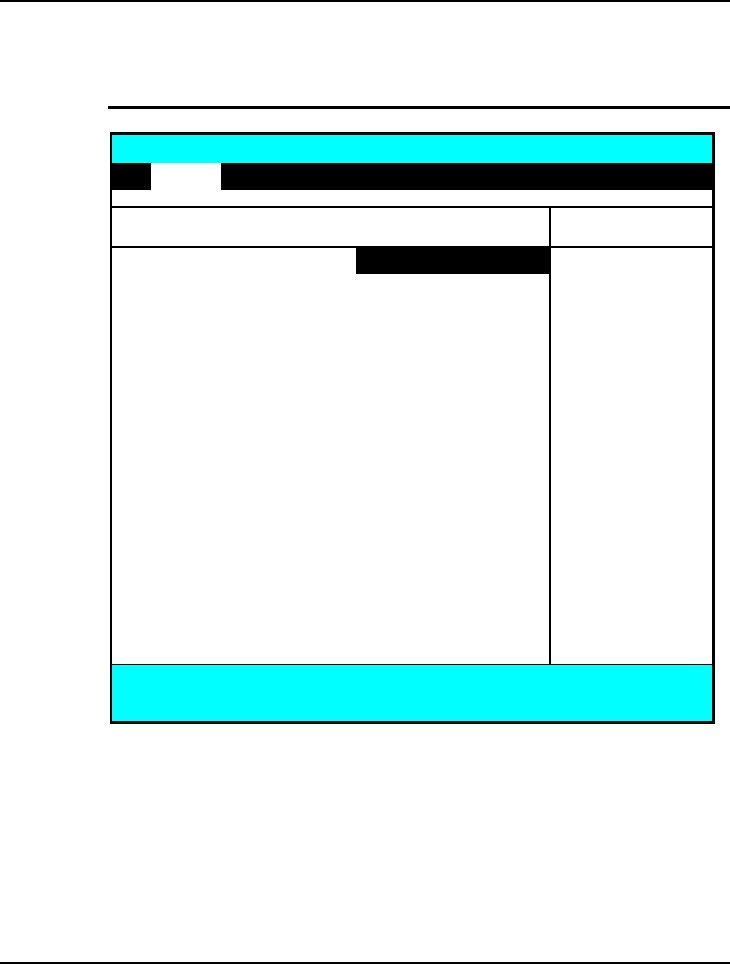
Customizing Your Notebook 6
6-7
6.2.1 INTERNAL HDD SUB-MENU
PhoenixBIOS Setup Utility
Main
Internal HDD: [12073MB] Item Specific Help
Type:
[Auto]
User = you enter
Cylinders: [16383] parameters of hard-
Heads: [16] disk drive installed
Sectors: [63] at the Connection.
Maximum Capacity: 12073MB Auto = autotypes
Hard-disk drive
Multi-Sector Transfers: [16 Sectors] installed here.
LBA Mode Control: [Enabled] None = no device is
32 Bit I/O: [Disabled] installed here.
Transfer Mode: [Fast PIO 4] CD-ROM = a CD-
SMART Monitoring: Disabled ROM drive is
Ultra DMA Mode: [Mode 2] installed here.
F1 Help
á
â
Select Item
−
/
+
Change Values F9 Setup Defaults
Esc Exit
ßà
Select Menu Enter Select
4
Sub-Menu F10 Save and Exit
Use the Type field to select the drive type installed. You can select different
drive types as CD-ROM, User, or None by pressing <Space> bar. Set this
option to Auto so your computer will automatically detect the drive type
during power on. Set this option to None when your computer is not installed
any devices. Press <Esc> to return to the Main Menu.

Notebook User Guide
6-8
6.3 Using the Advanced CMOS Setup
PhoenixBIOS Setup Utility
Main Advanced Security Power Boot Exit
Item Specific Help
PS/2 Mouse: [Enabled] ‘Disabled’ prevents any
Silent Boot: [Disabled] installed PS/2 mouse
Local Bus IDE adapter: [Both] from functioning, but
4I/O Device Configuration frees up IRQ12.
‘Enabled’ allows the
operating system to
determine whether
to enable or disable
the mouse
F1 Help
á
â
Select Item
−
/
+
Change Values F9 Setup Defaults
Esc Exit
ßà
Select Menu Enter Select
4
Sub-Menu F10 Save and Exit
• PS/2 Mouse
[Enabled] allows the OS to determine whether to enable or disable the
PS/2 mouse. [Disabled] prevents any installed PS/2 mouse from
functioning.
• Silent Boot
Lets you specify the boot screen as Logo screen, POST screen, or Black
screen by choosing Enabled, Disabled, or Black option, respectively.
• Local Bus IDE adapter
Allows you to enable/disable the IDE hardware such as HDD and CD-
ROM.
• I/O Device Configuration
Lets you configure input/output device such as Serial Port, Infrared Port,
Parallel Port, and Floppy disk controller.
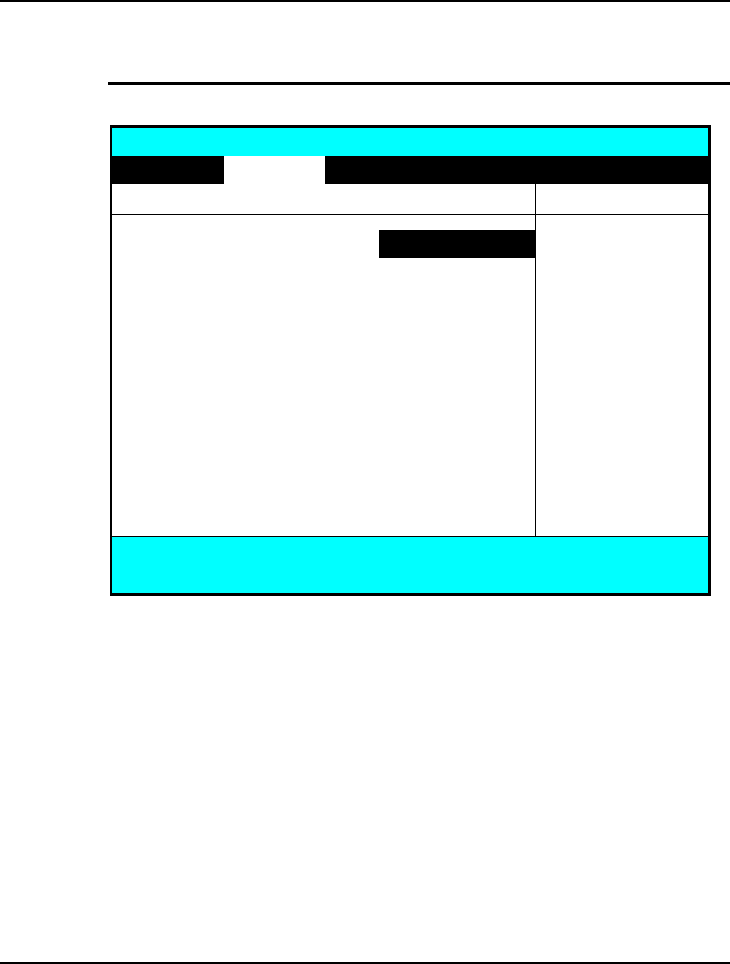
Customizing Your Notebook 6
6-9
6.3.1 PERIPHERAL SUB-MENU
PhoenixBIOS Setup Utility
Advanced
I/O Device Configuration Item Specific Help
Serial port: [Auto] Configure serial port A
Infrared port: [Disabled] using options:
Parallel port: [Auto] [Disabled]
Mode: [Bi-directional] No configuration,
Floppy disk controller: [Enable] [Enabled]
User configuration,
[Auto]
BIOS or OS chooses
configuration,
F1 Help
á
â
Select Item
−
/
+
Change Values F9 Setup Defaults
Esc Exit
ßà
Select Menu Enter Select
4
Sub-Menu F10 Save and Exit
• Serial port
You can press <Enter> to select the Enabled, Disabled, or Auto option
for enabled or disabled the port, or automatically sensed the address
assignment by BIOS or OS.
• Infrared port
Lets you press <Enter> to select the Enabled, Disabled, or Auto option
for enabled or disabled the port, or automatically sensed the address
assignment by BIOS or OS.

Notebook User Guide
6-10
• Parallel port
Allows you to press <Enter> to select the Enabled, Disabled, or Auto
option for enabled or disabled this port, or automatically sensed the
address assignment by BIOS or OS.
• Mode
Allows you to press <Enter> to select a parallel mode as Output only,
Bi-directional, or ECP when the parallel port is configured. When you set
the configured parallel port to Enabled rather than Auto, you should also
set the parameter of Base I/O address and DMA channel for this port.
• Floppy disk controller
Allows you to press <Enter> to select the Enabled or Disabled option
for configured or not configured the floppy disk controller.
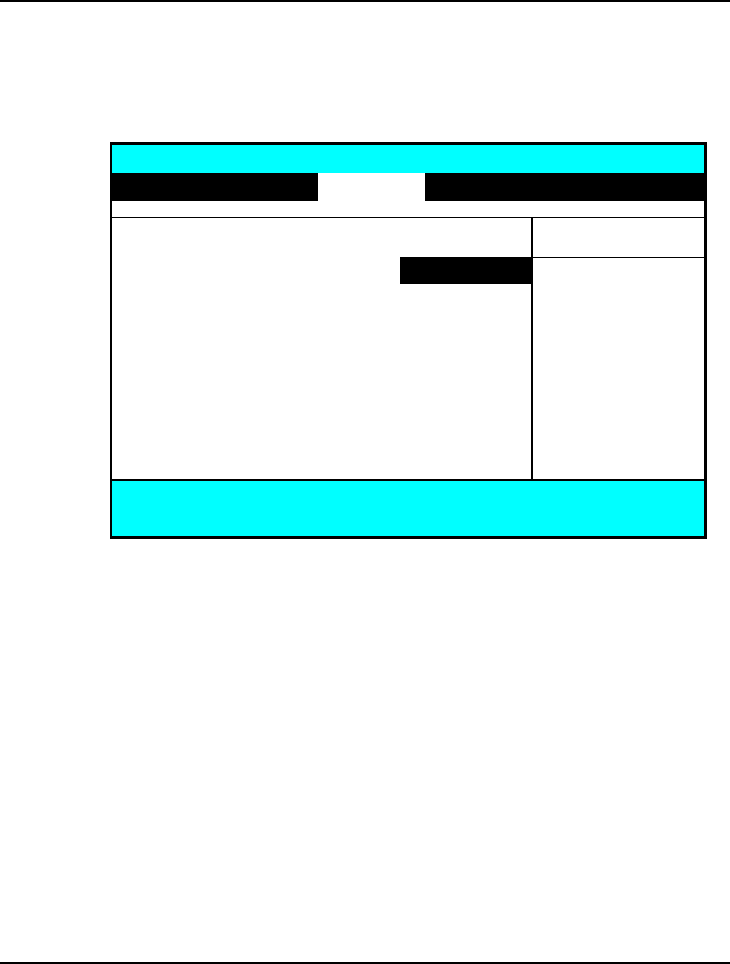
Customizing Your Notebook 6
6-11
6.4 Security Menu Setup
PhoenixBIOS Setup Utility
Main Advanced Security Power Boot Exit
Item Specific Help
Set Supervisor Password:
[Enter]
Supervisor Password
Set User Password: [Enter] controls access to the
setup utility.
Password on boot: [Disabled]
Password on Resume: [Disabled]
Fixed disk boot sector: [Normal]
Diskette access: [Supervisor]
F1 Help
á
â
Select Item
−
/
+
Change Values F9 Setup Defaults
Esc Exit
ßà
Select Menu Enter Select
4
Sub-Menu F10 Save and Exit
• Set Supervisor Password
Supervisor password gives you the authority in accessing the setup utility.
You can also enter the supervisor password in booting the system and
resuming from suspend mode. When you press <Enter> in this field,
the Set Supervisor Password dialog box appears. Enter a new password
with up to 8 alpha-numeric characters, and then enter this same new
password again for confirmation.
• Set User Password
This field is only available when you have set Supervisor Password
previously. You can enter the user password when boot the system or
resume from suspend mode. But if you set Write Protect in the Fixed
disk boot sector field, you should enter a supervisor password to access
the fixed disk when boot the system or resume from suspend mode.

Notebook User Guide
6-12
• Password on Boot
If you set this field to Enabled, your computer will always ask for the
password every time you boot your computer.
• Password on Resume
If you set this field to Enabled, your computer will always ask for the
password every time when you resume from your computer.
• Fixed Disk Boot Sector
If you set this field to Write Protect, the write protect boot sector on
hard disk will protect against viruses. In this situation, only the supervisor
can access this fixed disk.
• Diskette Access
If you set this field to Supervisor, only the supervisor can access to the
diskette drives. If you set to User, both the supervisor and user can
access to the diskette drives.

Customizing Your Notebook 6
6-13
6.5 Using Power Saving Setup
PhoenixBIOS Setup Utility
Main Advanced Security Power Boot Exit
Item Specific Help
Power Button Mode:
[On/Off]
Behavior of the
SpeedStep Mode [Automatic]
Power switch.
Power Management Function
[Battery only] ‘Suspend/Resume’
Power Savings Level
[Disabled] causes the PC to
Suspend/Resume,
Standby Timeout: [Off]
Suspend
Timeout: [Off] ‘On/Off’ causes the
Suspend Mode:
[Suspend] PC to Power
Auto Save To Disk:
[Off] On/Off.
Hard Disk
Timeout: [Disabled]
Video
Timeout: [Disabled] Please be noticed
that all the Power
Resume On Modem Ring:
[Off] menu settings will
Resume On Time:
[Off] be ineffective in
Resume Time:
[00:00:00] the ACPI mode.
F1 Help
á
â
Select Item
−
/
+
Change Values F9 Setup Defaults
Esc Exit
ßà
Select Menu Enter Select
4
Sub-Menu F10 Save and Exit
• Power Button Mode
The power button operates as both an On/Off and Suspend/Resume
button.

Notebook User Guide
6-14
ß On/Off functions as a normal power switch to power the system on
or off.
ß Suspend/Resume functions as a suspend button to put the system
into Suspend mode and return to normal operation from Suspend.
• SpeedStep Mode
Automatically increase or decrease the CPU frequency to high or low
speed by selecting various mode as Automatic, Maximum Performance,
Battery Optimized, or Disabled. For example, if the high speed and low
speed of CPU are 650MHz and 500 MHz, respectively, then you can get
the followings as:
ß For Automatic, system will automatically detect whether the AC
adapter is connected or not, if it is connected, CPU speed will be set
to 650MHz (high speed), otherwise it will be 500MHz (low speed).
ß For Maximum Performance, CPU speed will always be set to
650MHz (high speed).
ß For Battery Optimized, CPU speed will always be set to 500MHz
(low speed).
ß For Disabled, system will ignore the SpeedStep technology for
whatever CPU type is installed (always is low speed).
• Power Management Function
Lets you set up power management by the system power source. You can
select Always On or Battery Only. If you choose Always On, various
power saving modes will function to save the power source both from
AC power and battery power. If you choose Battery Only, power saving
function will only execute for battery pack.
• Power Savings Level
Lets you choose one of four levels of power management.

Customizing Your Notebook 6
6-15
ß Diabled
turns off the power management function.
ß Customized
alter these settings.
ß Maximum Power Savings
conserves the greatest amount of system power.
ß Maximum Performance
conserves power but allows the greatest system performance.
• Standby Timeout
Lets you specify the amount of time before the system entering the
Standby Mode. Standby Mode powers off various devices in the system,
until you start using the computer again. You can choose Off, 1, 2, 4, 6, 8,
12, or 16 minutes in this field.
• Suspend Timeout
Lets you specify the amount of time before the system entering the
Suspend Mode. Suspend Mode powers off various devices in the system,
except the memory component, until you start using the computer again.
You can choose Off, 5, 10, 15, 20, 30, 40, or 60 minutes in this field.
• Suspend Mode
Lets you select the suspend mode. You can press <Enter> to choose the
Suspend or Save To Disk option. If you choose Save To Disk, the system
will save its state to disk and then power off. If you choose Suspend, the
system will save its state but remaining in a low power mode.
• Auto Save To Disk
Lets you turn on or off the Auto Save To Disk feature. If you turn on it,
the system will save its state to disk and then power off after being in
Suspend mode for 1 hour.

Notebook User Guide
6-16
• Hard Disk Timeout
Allows you to select the amount of time that your hard disk is not active
before it shuts down. You can specify the amount of time as 1, 2, 4, 6, 8,
10, 15, 30, 45 minutes, or choose Disabled to inactive this feature.
• Video Timeout
Allows you to select the amount of time that your input devices are not
active before your video shuts down. You can specify the amount of time
as 1, 2, 4, 6, 8, 10, 15, 30, 45 minutes, or choose Disabled to inactive this
feature.
• Resume On Modem Ring
Lets you specify On or Off to wake up the system or not, when an
incoming call is detected on your modem. If the Suspend Mode field is
set to Save To Disk, the Resume On Modem Ring field will not work.
• Resume On Time
Lets you specify On or Off to wake the system up at a specific time or
not. If the Suspend Mode field is set to Save To Disk, the Resume On
Time field is disabled.
• Resume Time
Lets you specify the time, with hour/minute/second, 24 hour format, to
wake up the system. To move the cursor within field to field, press
<Tab>, <Shift-Tab>, or <Enter> key. To change the number in each
field, press <Space> bar.
+
All above the Power Menu Settings will be ineffective in the ACPI mode.
6.6 Using the Boot Setup
This item allows you to set the search drive sequence where the system will
try to boot up first.

Customizing Your Notebook 6
6-17
PhoenixBIOS Setup Utility
Main Advanced Security Power Boot Exit
Item Specific Help
+Removable Devices Use <á> or <â> to
+Hard Drive select a device, then
ATAPI CD-ROM Drive press <+> to move it
up to the list, or <-> to
move it down to the
list. Press <ESC> to
exit from this menu.
F1 Help
á
â
Select Item
−
/
+
Change Values F9 Setup Defaults
Esc Exit
ßà
Select Menu Enter Select
4
Sub-Menu F10 Save and Exit
To select the boot device, you can use the up or down arrow key, then press
<+> to move up the device in the list or press <-> to move down the device
in the list. To exit from this menu, press <Esc>.

Notebook User Guide
6-18
6.7 How to Exit the Setup Program
There are three choices to escape from the Setup program.
PhoenixBIOS Setup Utility
Main Advanced Security Power Boot Exit
Item Specific Help
Exit Saving Changes
Exit System Setup
Exit Discarding Changes and save your
Load Setup Defaults changes to CMOS.
Discard Changes
Save Changes
Battery Refresh
F1 Help
á
â
Select Item
−
/
+
Change Values F9 Setup Defaults
Esc Exit
ßà
Select Menu Enter Execute Command F10 Save and Exit
• Exit Saving Changes
This option saves all changes to CMOS while running the BIOS setup
program and exit from the system setup program.
• Exit Discarding Changes
This options allows you to discard all changes made while running the
BIOS setup program and exit from the system setup program.
• Load Setup Defaults
This option lets you load the default values for all setup items.
• Discard Changes
Reverts to previously selected settings.

Customizing Your Notebook 6
6-19
• Save Changes
Saves Setup data to CMOS.
• Battery Refresh
Conditions the battery so that the battery can be fully charged. The
function applies to NiMH battery only.
6.8 How to Upgrade the BIOS
Your computer uses EPROM Flash BIOS chip that allows you to easily
upgrade the BIOS program. When you update the BIOS, any customized
settings you made are lost.
To upgrade the BIOS:
1. Insert the BIOS Update diskette into the diskette drive.
2. Power on the system with the diskette in the diskette drive.
3. On the DOS prompt, type the following command.
A:\>Phlash XXXXXX.ROM (BIOS filename)
4. Press <Enter> to run this BIOS utility. After the system has been
successfully run this program, a message similar to the following appears:
Flash memory has been successfully programmed,
press any key to restart the system. If the
system does not restart, turn it off, then turn
on again.
5. Press any key to restart this system.
Contact your dealer for the latest BIOS update file.

Notebook User Guide
6-20
6CUSTOMIZING YOUR NOTEBOOK ................................................................... 1
6.1 RUNNING THE BIOS SETUP PROGRAM....................................................... 2
6.2 USING THE MAIN MENU SETUP ................................................................. 4
6.2.1 Internal HDD Sub-Menu.................................................................. 7
6.3 USING THE ADVANCED CMOS SETUP ....................................................... 8
6.3.1 Peripheral Sub-Menu..................................................................... 9
6.4 SECURITY MENU SETUP.......................................................................... 11
6.5 USING POWER SAVING SETUP ................................................................. 13
6.6 USING THE BOOT SETUP ......................................................................... 16
6.7 HOW TO EXIT THE SETUP PROGRAM ........................................................ 18
6.8 HOW TO UPGRADE THE BIOS.................................................................. 19